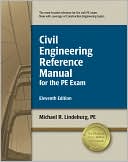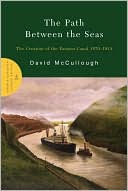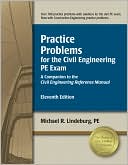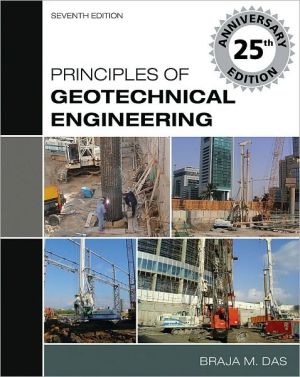Construction Dewatering and Groundwater Control: New Methods and Applications
In the past dozen years, the methods of analyzing and treating groundwater conditions have vastly improved. The Third Edition of Construction Dewatering and Groundwater Control, reflecting the most current technology and practices, is a timely and much-needed overview of this rapidly changing field. Illustrated with hundreds of new figures and photographs and including numerous detailed case histories, the Third Edition of Construction Dewatering and Groundwater Control is a comprehensive and...
Search in google:
The most up-to-date guide to construction dewatering and groundwater control In the past dozen years, the methods of analyzing and treating groundwater conditions have vastly improved. The Third Edition of Construction Dewatering and Groundwater Control, reflecting the most current technology and practices, is a timely and much-needed overview of this rapidly changing field.Illustrated with hundreds of new figures and photographs and including numerous detailed case histories, the Third Edition of Construction Dewatering and Groundwater Control is a comprehensive and valuable reference for both students and practicing engineers alike.Drawing on real-world experience, the authors lead the reader through all facets of the theory and practice of this fascinating and often complex engineering discipline. Discussion includes: Dozens of case histories demonstrating various groundwater control practices and lessons learned in groundwater control and work performedDetailed methods of controlling groundwater by use of conventional dewatering methods aswell as vertical barrier, grouted cutoff, and frozen ground techniques Contracting practices and conflict resolution methods that will help minimize disputes Alternatives and effective practices for handling and treating contaminated groundwaterInnovations in equipment and materials that improve the performance and efficiency of groundwater control systemsPractices and procedures for success in artificial rechargeGroundwater modeling to simulate and plan dewatering projects Inclusion of dual U.S. customary and metric units throughoutConstruction Dewatering and Groundwater Control is an indispensable tool for all engineering and construction professionals searching for the most up-to-date coverage of groundwater control for various purposes, the modern ways to identify and analyze site-specific situations, and the modern tools available to control them.
Preface to the Third Edition xiiiAbout the Authors xvAcknowledgements xviiTheory 1Groundwater in Construction 3Groundwater in the Hydrologic Cycle 3Origins of Dewatering 6Development of Modern Dewatering Technology 6The Geology of Soils 10Geologic Time Frame 11Formation of Soils 11Mineral Composition of Soils 11Rivers 12Lakes 12Estuaries 14Beaches 14Wind Deposits 14Glaciers-The Pleistocene Epoch 14Rock 16Limestone and Coral 17Tectonic Movements 19Man-made Ground 19Soils and Water 22Soil Structure 22Gradation of Soils 22Porosity, Void Ratio, and Water Content 26Relative Density, Specific Gravity, and Unit Weight 26Capillarity and Unsaturated Flow 27Specific Yield and Specific Retention 27Hydraulic Conductivity 29Plasticity and Cohesion of Silts and Clays 35Unified Soil Classification System (ASTM D-2487) 35Soil Descriptions 39Visual and Manual Classification of Soils 40Seepage Forces and Soil Stress 42Gravity Drainage of Granular Soils 43Drainage of Fine-grained Soils: Pore Pressure Control 44Settlement as a Result of Dewatering 46Preconsolidation 48Other Side Effects of Dewatering 50Hydrology of the Ideal Aquifer 52Definition of the Ideal Aquifer 52Transmissivity T 53Storage Coefficient C[subscript s] and Specific Yield 53Pumping from a Confined Aquifer 55Recovery Calculations 56The Unconfined or Water Table Aquiter 57Specific Capacity 58Characteristics of Natural Aquifers 61Anisotropy: Stratified Soils 61Horizontal Variability 64Recharge Boundaries: Radius of Influence R[subscript 0] 64Barrier Boundaries 65Delayed Release from Storage 65Dewatering Design Using Analytical Methods 66Radial Flow to a Well in a Confined Aquifer 66Radial Flow to a Well in a Water Table Aquifer 68Radial Flow to a Well in a Mixed Aquifer 69Flow to a Drainage Trench from a Line Source 69The System as a Well: Equivalent Radius r[subscript s] 70Radius of Influence R[subscript 0] 71Hydraulic Conductivity K and Transmissivity T 71Initial Head H and Final Head h 72Partial Penetration 72Storage Depletion 73Specific Capacity of the Aquifer 75Cumulative Drawdown or Superposition 76Capacity of the Well Q[subscript w] 77Flow Net Analysis and the Method of Fragments 79Concentric Dewatering Systems 80Vertical Flow 81Gravel Tremie 82Groundwater Modeling Using Numerical Methods 84Models in Dewatering Practice 84When to Consider a Numerical Model 87Principal Steps in Model Design and Application 90The Conceptual Model: Defining the Problem to Be Modeled 90Selecting the Program 91Introduction to MODFLOW 91Verification 94Calibration 94Prediction and Parametric Analyses 95Some Practical Modeling Problems 952-D Model: Well System in a Water Table Aquifer 95Calibrating the Model 973-D Model: Partial Penetration 983-D Model: Vertical Flow 1013-D Model: Transient Analysis of a Progressive Trench Excavation 102Piezometers for Groundwater Measurement and Monitoring 111Subsurface Conditions 111Ordinary Piezometers and True Piezometers 111Piezometer Construction 113Verification of Piezometer Performance 115Obtaining Data from Piezometers 115Pore Pressure Piezometers in Fine-grained Soils 117Direct Push Technologies for Piezometer Installation 118Pumping Tests 121When a Pumping Test Is Advisable 121Planning the Pumping Test 122Design of the Pumping Well 122Piezometer Array 125Duration of Drawdown and Recovery 126Pumping Rate 128Monitoring the Pumping Test 128Analysis of Pumping Test Data 129Tidal Corrections 132Well Loss 134Step Drawdown Tests 136Testing of Low-yield Wells 137Delayed Storage Release: Boulton Analysis 138Surface Hydrology 141Lakes and Reservoirs 141Bays and Ocean Beaches 141Rivers 141Precipitation 144Disposal of Dewatering Discharge 145Water from Existing Structures 150Geotechnical Investigation for Dewatering 152Investigation Approach and Objectives 152Preliminary Studies and Investigations 153Borings 154In Situ Test Methods 164Piezometers and Observation Wells 167Borehole Seepage Tests for Evaluation of Hydraulic Conductivity 169Laboratory Analysis of Samples 178Chemical Testing of Groundwater 180Geophysical Methods 180Pumping Tests 181Permanent Effect of Structures on the Groundwater Body 181Investigation of the Potential Side Effects of Dewatering 182Presentation in the Bidding Documents 183Pump Theory 185Types of Pumps Used in Dewatering 185Total Dynamic Head 189Pump Performance Curves 189Vacuum Pumps 190Air Lift Pumping 192Testing of Pumps 193Groundwater Chemistry, Bacteriology, and Fouling of Dewatering Systems 195Types of Corrosion 195Corrosive Groundwater Conditions 196Dewatering in Corrosive Groundwater Conditions 198Incrustation 198Mineral Incrustation 199Biological Incrustation 200Dewatering Systems and Incrustation 205Field Evaluation of Well Fouling 208Rehabilitation and Maintenance 209Analysis of Groundwater 215Contaminated Groundwater 222Contaminants Frequently Encountered 222Design Options at a Contaminated Site 223Estimating Water Quantity to Be Treated 225Other Considerations in Treatment Design 225Elements of Groundwater Treatment 226Recovery of Contaminated Water with Dewatering Techniques 229Dynamic Barriers 232Wellpoint Systems and Multiphase Contaminants 232Reinjection 233Health and Safety 234Regulating Authorities 234Piping Systems 238Dewatering Pipe and Fittings 238Losses in Discharge Piping 241Losses in Wellpoint Header Lines 241Losses in Ejector Headers 243Water Hammer 243Practice 245Choosing a Method of Groundwater Control 247To Pump or Not to Pump 247Open Pumping Versus Predrainage 247Methods of Predrainage 250Methods of Cutoff and Exclusion 253Methods in Combination 253Sumps, Drains, and Open Pumping 259Soil and Water Conditions 259Boils and Blows 259Construction of Sumps 260Ditches and Drains 261Gravel Bedding 261Slope Stabilization with Sandbags, Gravel, and Geotextiles 262Use of Geotextiles 262Soldier Piles and Lagging: Standup Time 263Longterm Effect of Buried Drains 264Leaking Utilities 264Battered Wellpoints 265Horizontal Wellpoints 265Deep Well Systems 267Testing During Well Construction 267Well Installation and Construction Methods 267Wellscreen and Casing 279Filter Packs 285Development of Wells 291Well Construction Details 295Pressure Relief Wells, Vacuum Wells 300Wells That Pump Sand 300Systems of Low-capacity Wells 304Wellpoint Systems 307Suction Lifts 307Single and Multistage Systems 310Wellpoint Design 310Wellpoint Spacing 313Wellpoint Depth 315Installation of Wellpoints 318Filter Sands 320Wellpoint Pumps, Header, and Discharge Piping 321Tuning Wellpoint Systems 323Air/Water Separation 326Automatic Mops 326Vertical Wellpoint Pumps 326Wellpoints for Stabilization of Fine-grained Soils 329Wellpoint Systems for Trench Work 331Ejector Systems and Other Methods 336Two-pipe and Single-pipe Ejectors 336Ejector Pumping Stations 338Ejector Efficiency 339Design of Nozzles and Venturis 340Ejector Risers and Swings 344Ejector Headers 344Ejector Installation 345Ejectors and Groundwater Quality 345Ejectors and Soil Stabilization 349Drilled Horizontal Wells 349Trencher Drains 355Groundwater Cutoff Structures 358Cutoff Terminology and Efficiency 358Steel Sheet Piling 358Slurry Trenches 367Slurry Diaphragm Walls 379Secant Piles 390Deep Soil Mixing 398Tremie Seals 405Grouting Methods 410Permeation Grouting 410Jet Grouting 439Rock Curtain Grouting 456Grouting of Structures and Flowpaths 474Dewatering and Groundwater Control for Soft Ground Tunneling 491Soft Ground Tunneling Methods with Conventional Dewatering 491Ground Behavior 495Mixed-face Ground Conditions 497Dewatering Design for Tunnels 497Methods of Tunnel Predrainage 499Tunneling Techniques with Built-in Groundwater Control 500Compressed Air Tunneling 504Dewatering of Access Shafts, Penetrations, and Starter Tunnels 505Ground Freezing 508General Principles 508Freezing Applications 509Freezing Methods and Equipment 515Ground Freezing and Soils 528Design 533Effect of Groundwater Movement 534Ground Movement Potential as a Result of Artificial Freezing 534Artificial Recharge 539Recharge Applications 539Design Objectives 540Potential Problems with Recharge Water and Plugging of Wells 541Sources of Recharge Water 543Treatment of Recharge Water 544Construction of Recharge Systems 545Operation and Maintenance of Recharge Systems 550Permits for Recharge Operations 550Electrical Design for Dewatering Systems 556Electrical Motors 556Motor Controls 561Power Factor 564Electric Generators 564Switchgear and Distribution Systems 566Grounding of Electrical Circuits 570Cost of Electrical Energy 570Long-term Dewatering Systems 572Types of Long-term Systems 572Access for Maintenance 572Instrumentation and Controls 575Dewatering Costs 577Format of the Estimate 577Basic Cost Data 577Mobilization 578Installation and Removal 578Operation and Maintenance 579Summary 581Specialty Dewatering Subcontractor Quotations 581Dewatering Specifications, Allocation of Risk, Dispute Avoidance, and Resolution of Disputes 584Performance Specifications 585Owner-designed Dewatering Systems 586Specified Minimum Systems 586Dewatering Submittals 586Third-party Damage Caused by Dewatering 587Differing Site Conditions 588Disputes Review Board 595Appendix A 597Appendix B 603Appendix C 620Index 623
\ From the Publisher"Following an introduction to the origins and developments of dewatering technology, they offer chapters discussing, among other topics, the geology of soils; hydrology of the ideal aquifer; characteristics of natural aquifers; groundwater modeling, measurement, and monitoring; pumping tests; pump theory; groundwater chemistry, bacteriology; contaminated groundwater; and piping systems." (Book News, February 2008)\ \








